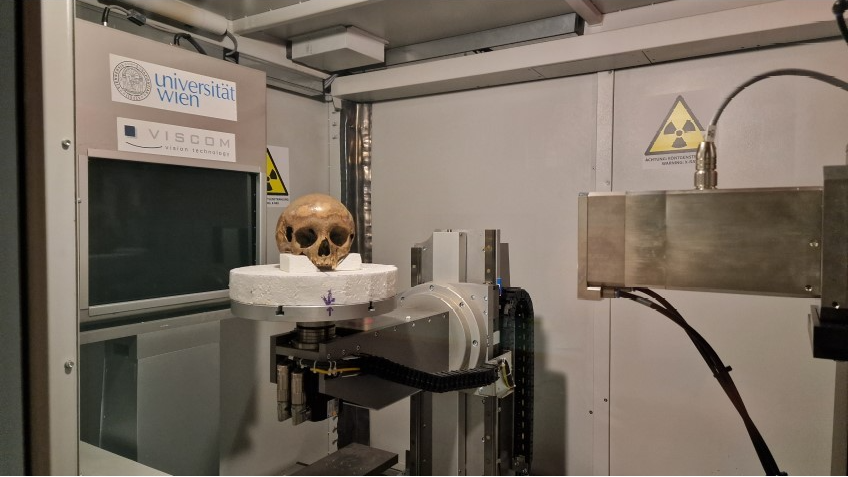A skull long assumed to be from Arsinoë IV, Cleopatra‘s half sister, is actually from an adolescent boy who had a genetic disorder, according to researchers. In a new study, the combination of CT scans and DNA analysis has proved once and for all that the skeleton, which was discovered in Turkey a century ago, was not Arsinoë.
In 1929, a skeleton was found in a marble sarcophagus in a building called the Octagon at Ephesus, an archaeological site in Turkey that boasted a massive temple to Artemis, the ancient Greek goddess of the hunt. There were no grave goods or inscriptions, but archaeologists at the time concluded that the burial was made for an important young woman. They guessed that the occupant of the tomb might have been Arsinoë IV, who took up arms against her half sister and Julius Caesar and led the Siege of Alexandria in 48 to 47 B.C. Arsinoë and her troops lost that battle, and she sought asylum at the Temple of Artemis in Ephesus. In 41 B.C., when she was 22 years old, Marc Antony ordered Arsinoë’s execution.
In a study published Friday (Jan. 10) in the journal Scientific Reports, a team of researchers reinvestigated the possibility that the skull recovered a century ago was Cleopatra’s half sister. Their radiocarbon analysis of the remains placed the person’s date of death between 205 and 36 B.C., which aligned with Arsinoë’s historically recorded death. However, the skeleton’s stage of development suggested the person was just 11 to 14 years old — much younger than Arsinoë.
“But then came the big surprise,” study lead author Gerhard Weber, a professor of evolutionary anthropology at the University of Vienna, said in a statement. “In repeated tests, the skull and femur both clearly showed the presence of a Y chromosome — in other words, a male.”
Because the skull bones were thinner and more fragile than expected, the researchers further investigated the skeleton and discovered deformities that had not been noticed previously.
Related: What did Cleopatra, Egypt’s last pharaoh, really look like?

One of the cranial sutures — the wiggly lines on a skull where the individual bones fuse during life — was already closed, which does not normally happen until a person is older than 65. Early closure of this cranial suture caused the boy’s skull to be asymmetrical.
More striking, the researchers noted in their study, was the person’s abnormally shaped upper jaw, coupled with at least one tooth that had no evidence of wear. Both of these features suggest that the boy had a malfunctioning upper jaw and potentially a small, abnormally oriented lower jaw.
One possible explanation for these skull and jaw traits is a rare genetic disorder called Treacher Collins syndrome (TCS), according to the researchers. This condition affects the development of the face and head, causing a small jaw, downward-slanting eyes, and hearing and vision problems. Although the team attempted to use genetic analysis to identify TCS in the adolescent boy, the surviving segments of DNA were insufficient to prove it.
But why this boy with developmental disturbances was buried in the prominent Octagon at Ephesus site remains a mystery, the researchers wrote in the study.
“What we can now say with certainty is that the person buried in the Octagon was not Arsinoë IV, and the search for her remains should continue,” they concluded in the study.
